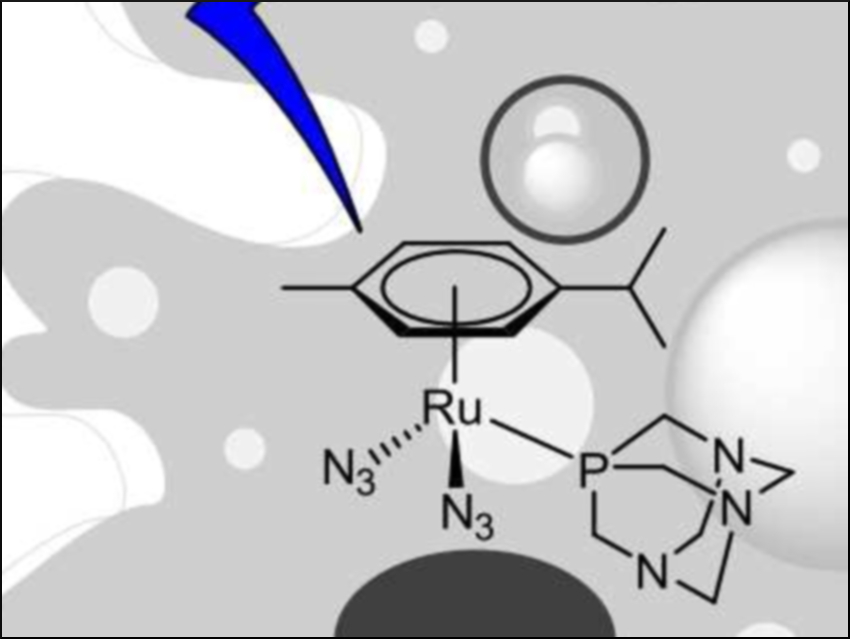Modern cancer therapies still suffer from problems such as the side-effects associated with chemotherapies or drug resistances. Thus, considerable efforts have been directed towards the development of anticancer drugs with new modes of action. One class of compounds with a high potential for cancer therapy are organometallic ruthenium(II) complexes of the type [Ru(η6-arene)(pta)Cl2] (arene = p-cymene, toluene, benzene, etc.; pta = 1,3,5-triaza-7-phosphaadamantane), the so-called RAPTA-type complexes.
Gilles Gasser, Chimie ParisTech, PSL University, France, Paul J. Dyson, Ecole Polytechnique Fédérale de Lausanne (EPFL), Switzerland, and colleagues have designed a photoactive RAPTA-type complex (pictured). Instead of chloro ligands, the complex bears azide ligands for photoactivated chemotherapy (PACT). The complex was synthesized from Ru(η6–p-cymene)Cl2]2 by adding N3SiMe3 and pta.
The resulting diazide complex, [Ru(η6–p-cymene)pta(N3)2], was found to be inert in water in the dark. It slowly releases the azide ligand on exposure to light. Thanks to this property, the complex was found to have an anticancer effect upon light irradiation on human cervical carcinoma (HeLa) cells. The compound is about 1.2–1.4 times more toxic for the cancerous cell line HeLa than for a non-cancerous cell line. This could open up new uses of such RAPTA-type complexes in medicine.
- Towards Light Activated Ruthenium-Arene (RAPTA-type) Prodrug Candidates,
Anna K Renfrew, Johannes Karges, Rosario Scopelliti, Felix D. Bobbink, Patrycja Nowak-Sliwinska, Gilles Gasser, Paul Dyson,
ChemBioChem 2019.
https://doi.org/10.1002/cbic.201900236

